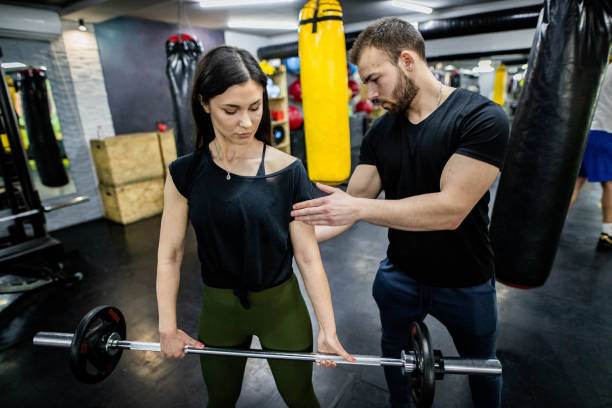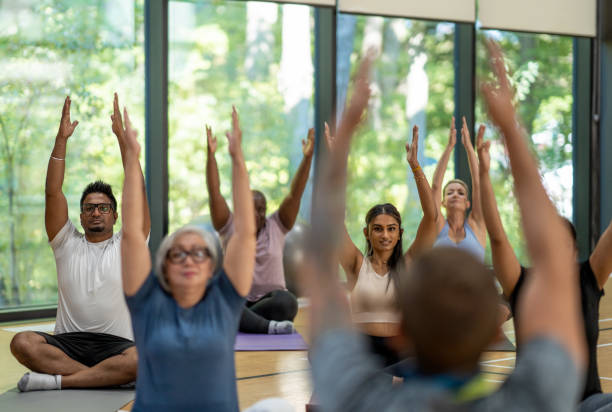Proven Techniques to Supercharge Muscle Recovery after Workouts
Are you tired of feeling sore and sluggish after your intense workouts?
Have you been desperately searching for ways to speed up your muscle recovery process?
Look no further!
In this blog post, we are going to share with you the ultimate secret sauce – 7 proven techniques that will supercharge your muscle recovery like never before. And you will say goodbye to those pesky aches and hello to faster gains!
Get ready to transform your workout routine into an optimal recovery powerhouse that will have you bouncing back stronger, faster, and more resilient than ever.
Without much ado, let’s dive deep into the world of muscle recovery magic!

How Does Muscle Recovery Work?
Muscle recovery becomes imperative after engaging in sports or any form of rigorous physical activity.
When a muscle undergoes intense loading, such as during strength or interval training, it incurs minor damage, resulting in small hairline cracks.
The fatigue and soreness experienced post-exercise are clear indicators that it’s time to allow the muscles to rest and recuperate.
Proper recovery is vital for muscle strengthening, and the post-treatment phase is just as crucial as the actual training session for promoting muscle growth. Thus, investing in meticulous muscle recovery becomes essential for optimizing sports performance.
The duration required for muscle recovery post-workout hinges on various factors.
For instance, the intensity and nature of your training play a significant role.
In parallel, strength training induces more muscle tears, making its recovery more time-consuming compared to activities like running or cycling, where muscle fibers experience less strain.
Beyond the type of exercise, the post-treatment measures adopted significantly contribute to enhancing muscle recovery.
Depending on the nature of your training and the steps taken afterward, the recovery of muscle fibers typically spans between 42 and 72 hours.
Note that attempting intensive training before complete recovery increases the risk of muscle and tendon injuries.

Treatment of back pain using kinesitherapy.
Tricks for Faster Muscle Recovery after Workouts
As a fitness enthusiast, you know the value of pushing yourself during workouts to achieve your fitness goals.
You also understand that it is equally crucial to allow your muscles to recover after intense training sessions.
Proper recovery ensures that your muscles heal, grow, and prepare for the next workout.
Apply the following tips to attain faster muscle recovery:
1. Hydrate
Exercising can be tough on your muscles, causing them to break down and become sore. However, proper hydration can help speed up the recovery process and keep your muscles in tip-top shape.
When you work out, you sweat, you regulate your body’s temperature and keep it cool. But sweating also causes you to lose fluids and electrolytes essential for proper muscle function. This is why it’s important to rehydrate after your workout.
Drinking water is the simplest and most effective way to replenish your fluids.
After a workout, aim to drink at least 16-20 ounces of water for every pound of body weight lost during exercise. This will replace the fluids you lost to prevent dehydration and replenish the electrolytes you lost through sweat.
Electrolytes are minerals like sodium, potassium, calcium, and magnesium, which help regulate fluid balance, muscle contractions, and nerve function.
One way to replenish electrolytes is to drink sports drinks designed to replace the fluids and electrolytes lost during exercise. They also provide carbohydrates, which can help replenish your energy stores.
Since sports drinks can be high in sugar and calories, look for drinks that are low in sugar and calories, and avoid those that contain artificial sweeteners and additives.
Alternatively, eat foods that are rich in electrolytes.
Foods such as bananas, avocados, spinach, and sweet potatoes are all good sources of potassium. Yogurt, cheese, and milk are good sources of calcium. And nuts, seeds, and dark chocolate are good sources of magnesium.

2. Warm Up before Workouts
When you warm up, you increase the blood flow to your muscles, which can help prepare them for the upcoming physical activity. This increase in blood flow can also help to loosen up the muscles, making them more flexible and less prone to injury.
Furthermore, warming up can activate the nervous system, improving the communication between your muscles and brain. This improved communication can lead to more efficient muscle contractions, allowing you to perform better during your workout.
But how exactly does warming up aid muscle recovery?
Improved Nutrient Delivery
Warming up promotes the delivery of nutrients and oxygen to the muscles.
When you warm up, your heart rate increases, and your blood vessels dilate, allowing more blood to flow to your muscles.
This increased blood flow can help deliver the necessary nutrients and oxygen your muscles need to recover after a workout.
Reduced Lactic Acid Build-Up
Lactic acid is a byproduct of exercise that can cause muscle fatigue and soreness.
Warming up helps your body better regulate the production and removal of lactic acid, reducing the likelihood of muscle fatigue and soreness after a workout.
But how long should you warm up for?
Generally, a good warm-up should last between 5 and 10 minutes.
You should aim to gradually increase your heart rate and body temperature during this time.
You can achieve this through light jogging, jumping jacks, or dynamic stretching.
Note that warming up is not a one-size-fits-all approach.
The type and duration of your warm-up should vary depending on the workout you’re doing and your fitness level.
For example, if you’re doing a high-intensity workout, you may need a longer warm-up than if you’re doing a low-intensity workout.

3. Cool Down after Exercise
Cooling down is just as important as warming up – it aids in muscle recovery and helps prevent injury.
A cool-down is a low-intensity activity that gradually brings your heart rate and breathing back to their resting states. The best cool-down activities include walking or jogging slowly, stretching, or performing light exercises.
Cooling down helps prevent blood from pooling in your legs, which can cause dizziness or fainting.
Cooling down also helps to remove waste products like lactic acid, which can accumulate in your muscles during exercise.
During exercise, your muscles break down and suffer from micro-tears. This is a natural response to physical activity, which allows your muscles to grow and become stronger.
If you don’t cool down after exercising, you may experience muscle soreness and stiffness.
Cooling down reduces muscle soreness and stiffness by promoting blood flow to your muscles.
This increased blood flow delivers oxygen and nutrients to your muscles, helping them repair and recover quickly.
Cooling down also helps to remove waste products like lactic acid that can build up in your muscles during exercise and cause discomfort.
Save for aiding muscle recovery, cooling down also helps to prevent injury.
When you exercise, your heart rate and blood pressure increase, and your blood vessels dilate.
This dilation can cause your blood to pool in your legs, making you feel dizzy or lightheaded.
Cooling down lowers your heart rate and blood pressure while promoting blood flow to your muscles.
Stretching during your cool-down can also help to prevent injury by increasing your range of motion and flexibility.
Post-workout stretching can also reduce your risk of strains, sprains, and varied workout-related injuries.

4. Foam Roll
Foam rolling is a form of self-myofascial release that involves using a foam roller to massage and release tight muscles.
Foam rolling is a warm-up or cool-down technique used before and after workouts.
Foam rolling can help alleviate muscle soreness and stiffness by increasing blood flow and oxygen to the affected muscles.
Using a foam roller after a workout can also help reduce inflammation, a natural response to injury or stress that can cause pain and swelling.
Foam rolling reduces inflammation by breaking up adhesions and scar tissue in muscles.
Foam rolling can also help improve flexibility and range of motion.
When our muscles are tight, they can limit our range of motion and make it difficult to perform certain exercises.
Using a foam roller releases tight muscles and improves your flexibility, leading to better performance and reduced risk of injury.
To use a foam roller for muscle recovery, select the right foam roller for your needs.
If you are new to foam rolling, start with a softer foam roller and gradually work your way up to a firmer one.
Next, find the area of your body that is sore or tight and position the foam roller underneath it.
Slowly roll back and forth over the area, applying gentle pressure.
If you feel a particularly tight spot, pause and hold the foam roller on that spot for a few seconds before continuing to roll.
Remember that foam rolling should not be painful. If you experience any sharp or intense pain, stop immediately and consult a healthcare professional.

5. Enjoy a Cool Post-Workout Bath/Shower
When you exercise, your muscles experience microscopic tears and inflammation.
Tears and inflammation are a natural response to the stress you put on your body during workouts.
But for your muscles to grow and become stronger, they need time to recover and repair. That’s where a cool post-workout bath or shower comes in.
Taking a cool bath or shower after your workout can reduce inflammation and increase blood flow to your muscles.
The cool water helps constrict blood vessels, which reduces swelling and inflammation.
Cold water also eases muscle soreness and speeds up the recovery process.
Additionally, the increased blood flow delivers more oxygen and nutrients to your muscles, aiding the repair and growth process.
But how cool is cool enough?
Experts recommend water temperatures between 50-70 degrees Fahrenheit for optimal muscle recovery.
Of course, everyone’s preferences are different, so find a temperature that works for you.
For best results, start with a slightly cooler temperature than you’re used to and gradually decrease it over time.
And remember to listen to your body. If the water feels too cold, don’t force yourself to stay in it.
Not only does a cool post-workout bath or shower aid in muscle recovery. It can also have other benefits for your overall health and wellness.
Cold water immersion is proven to boost the immune system, improve circulation, and increase alertness. Furthermore, taking a relaxing bath or shower can reduce stress levels and promote relaxation.

6. Wear Compression Apparel
You already know that workout stress causes micro-tears in your muscle fibers, which is a normal part of building muscle. And it is during the recovery period that your muscles grow and become stronger.
This is where compression apparel comes in.
Compression apparel works by applying pressure to your muscles. This pressure helps to increase blood flow to the area, which in turn helps to deliver oxygen and nutrients to your muscles.
This increased blood flow also removes waste products like lactic acid from your muscles.
Lactic acid is what causes muscle soreness, so by removing it from your muscles, you can reduce soreness and speed up recovery time.
Compression apparel also aids muscle recovery by reducing inflammation.
When you work out, your body produces inflammatory cytokines, which can cause swelling and pain in your muscles. Compression apparel reduces this inflammation by applying pressure to the area, which helps to reduce the amount of fluid that builds up in your muscles.
Compression apparel also helps to support your muscles during your workout. This support helps to reduce muscle fatigue and prevent injury.
When your muscles are supported, they are less likely to become fatigued. And this can help you to push harder and achieve better results.
So, what types of compression apparel should you wear?
There are various options available, including compression shorts, pants, tights, socks, and sleeves.
The type of apparel you choose will depend on the area of your body that you want to target. For example, if you are experiencing calf pain, you may want to wear compression socks. If you are experiencing quad pain, you may want to wear compression shorts.
When choosing compression apparel, select a high-quality product that fits properly.
Note that poorly fitting compression apparel can do more harm than good. So be sure to choose a product that is designed to fit your body properly.

7. Prioritize Your Rest Days
Rest days give your muscles time to repair and rebuild.
As you are aware, when you exercise, you’re essentially creating tiny tears in your muscles. It’s during rest that your body uses protein to repair these tears and build stronger muscle fibers.
Without adequate rest, your muscles don’t have the time or resources they need to fully recover, which can lead to overtraining, injury, and even loss of muscle mass.
And rest days aren’t just important for physical recovery. They’re also crucial for mental and emotional well-being.
While exercise can be a great stress reliever, it can also be a source of stress if you’re constantly pushing yourself to the limit. Thus, taking a day off can give you the mental break you need to recharge and come back to your workouts feeling refreshed and energized.
So how often should you be taking rest days?
Your choice of rest days depends on various factors, including your fitness level, the intensity of your workouts, and your overall health.
As a general rule, most people benefit from at least one or two rest days per week.
This doesn’t mean you have to be completely sedentary on those days. Light activity like stretching or gentle yoga can aid muscle recovery – but it does mean giving your body a break from intense, high-impact exercise.
Another factor to consider is the type of exercise you’re doing.
If you’re doing primarily strength training, you may need more rest days than if you’re doing mostly low-impact cardio. This is because strength training causes more muscle damage than cardio, and therefore requires more time for recovery.
Of course, there may be times when you need to deviate from your regular rest schedule.
For example, if you’re training for a competition or event, you may need to work out more frequently than usual. In these cases, it’s important to listen to your body and adjust your rest days as needed.
If you feel particularly sore or fatigued, it’s better to take an extra rest day than to push through and risk injury.

Over to You
With these tips, be sure to gain fast-paced muscle recovery and achieve your fitness goals in no time.
Looking to build muscle and endurance without breaking the bank? Don’t look any further.
Subscribe to Kloud Iron’s 28-day fitness program and begin your journey toward optimal mental health and physical fitness.
To learn more about Kloud Iron Fitness Hub’s offers, contact us today or message/follow us on Facebook and Instagram. We are also available on YouTube.


2 Comments
binance tavsiye
3 months agoCan you be more specific about the content of your article? After reading it, I still have some doubts. Hope you can help me.
keyz0
2 months agoSure thing! What’s your question?